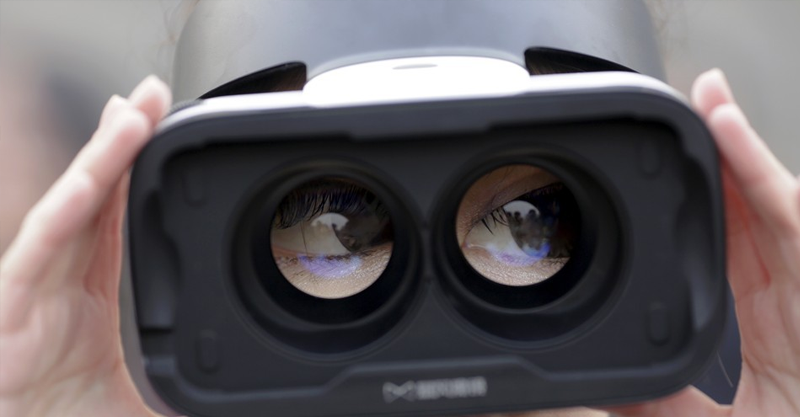The trouble with personal tech like smartwatches is that it took so long for decent ones to show up. Had they arrived in the forties, in Dick Tracy’s time, people surely would have been eager to trade in their basic timepieces for wrist-mounted communication devices. Even in the eighties or nineties, when calculator watches were hot, consumers might have been impressed with a timepiece that could make a phone call. But because real smartwatches have begun to appear only in the last year or so, they face a challenge that would have been difficult to anticipate: by now, a lot of people have stopped wearing wristwatches.
It wasn’t until September of 2013 that Samsung unveiled the Galaxy Gear, a two-hundred-and-ninety-nine-dollar device that could make calls, take videos, and display messages. It was seen as the first computerized watch that people might actually like to own. Since then, a number of other companies have announced similar devices. As of Tuesday morning—ahead of an Apple event at which the company is expected to announce its own wearable device—smartwatches are also available from Motorola, Sony, LG, and others.
But while it’s early yet, people don’t seem to get these devices. A survey publishedin August found that only three per cent of respondents in the U.S. and U.K. said that they owned a smartwatch. Another two per cent owned one but didn’t use it anymore. Only sixteen per cent of men and ten per cent of women said that they planned to buy one by the end of the year. The most-cited reasons for not buying a smartwatch: people didn’t see the point, and they found them too expensive.
That people are turned off by the high price of smartwatches shouldn’t be particularly worrisome for the companies that make them; production costs and prices are bound to fall over time. What’s notable is the percentage of people who don’t see what makes a smartwatch particularly useful. While MP3 players could be marketed as a replacement for CD players, and smartphones could be sold as better cell phones, smartwatches have nothing to displace. Companies have to persuade people to add a device to their lives. And given that, people aren’t going to buy smartwatches unless they do something that existing devices, like smartphones or fitness trackers, don’t do—or, in any case, unless they do it better.
So far, no smartwatch has accomplished this. Sure, you can put your Galaxy Gear to your ear and make a call, or hold it in the air and take a photo, but you can do all that—and without all the calisthenics—with a smartphone. Pop-up notifications about e-mails, appointments, and missed calls can be useful, but they can also be overwhelming, and many of the existing smartwatches are worse than smartphones at letting you customize the alerts. Fitness features like heart-rate trackers are nice, but specialized fitness devices like the Fitbit already do all that.
The question is whether Apple can introduce a watch that does more. One idea is for it to take advantage of a watch’s proximity to your body, sensing more information about your health and fitness levels than existing devices do. Tim Bajarin, an analyst at Creative Strategies, notes that a smartwatch might monitor your vital signs and share them with your doctor who could then track your health in real time. It wouldn’t be surprising for Apple to try this. In June, the company introduced a system, called HealthKit, that lets health and fitness services plug their data into a new app called Health. Apple said that it could send some of this data to health-care providers, with your permission. A smartwatch would give Apple another way to collect information; the Wall Street Journal has reported that the expected watch includes ten sensors for tracking health and fitness data.
The devices could also replace smartphones at quick, simple tasks that don’t require much work. It’s hard to imagine typing out an e-mail on a watch. But tapping your watch against a sensor at a store to pay for your groceries could be easier than fishing out your phone to do the same thing. (The Wall Street Journalalso reports that Apple’s expected smartwatch includes wireless technology for what’s known as near-field communication, which could facilitate these kinds of payments.)
None of this would be easy to pull off. When it comes to health-care data, there are a number of complicated privacy regulations surrounding how people’s information can be shared—and besides, who’s to say that doctors would be equipped (or willing) to deal with every little detail about their patients’ day-to-day health? Privacy and security issues could also complicate a pay-by-watch system. And beyond payments, it’s hard to think of too many applications in which a smartwatch would make more sense than a smartphone.
There’s another issue. As Google has discovered with Google Glass, wearable devices need to look good in order for people to want to wear them. But a lot of the smartwatches available have fallen short of basic fashion standards. Apple seems aware of this potential pitfall: in the past couple of years, it has hired executives from Tag Heuer, Burberry, and Yves Saint Laurent. According to Reuters, the company has invited “unprecedented” numbers of fashion editors and bloggers to Tuesday’s event. Even if people aren’t sure that they need a smartwatch, they might be willing to buy one anyway if it looks nice enough on their wrist. After all, that’s what a lot of people have been doing, for years, with regular watches.






